
Peugeot E-308 Hatchback Review (2024)

Introduction
When it comes to electric cars, hatchbacks are often a tricky subject.
You see, larger cars have more space, which generally lends itself to better accommodating the changes needed to fit batteries and electric motors.
Many electric vehicles are based on platforms initially designed to accommodate a combustion engine and a fuel tank, not an electric motor.
As a result, while some can handle the changes needed to produce an all-electric car, others can’t.
The simplified logic: the smaller the platform, the less chance they can be converted to an all-electric vehicle.
Unfortunately, hatchbacks are, by nature, smaller, meaning manufacturers often have to go back to the drawing board and come up with a clean-sheet design.
That is not always the case, and there are some notable exceptions. But it explains why we've seen comparatively few electric hatchbacks so far, generally speaking.
Here’s one, though: the Peugeot e-308.
It is based on the CMP platform (called e-CMP when used for electric cars), which has been around for five years now. And it gives a home to several cars, including the Citroen C3, C4, C4 X, the DS 3 and the Peugeot 208 and 2008.
With all-electric hatchbacks still catching on, the e-308 has a great opportunity at a head start.
Does it take full advantage? That’s what we’re aiming to find out.
Select's rating score* - 3.4 / 5
At a Glance
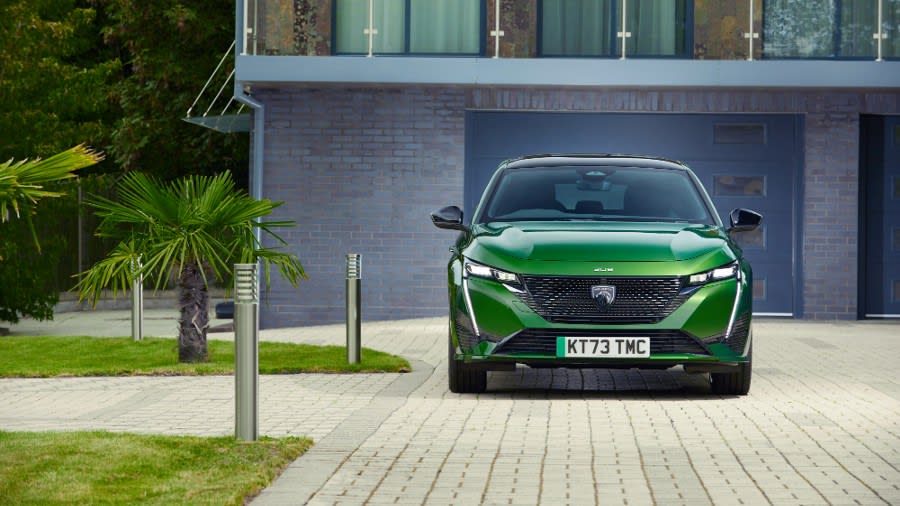
Peugeots have always had rather striking and, sometimes, weird looks – but they’ve never really been all that desirable.
Until now.
The e-308 is the latest Peugeot that's arriving with a transformed appearance which stands out from the crowd.
Its front end features a large, stylish grille with thinned-out headlights and claw-like day-running lights, which extend downwards like a bolt of lightning.
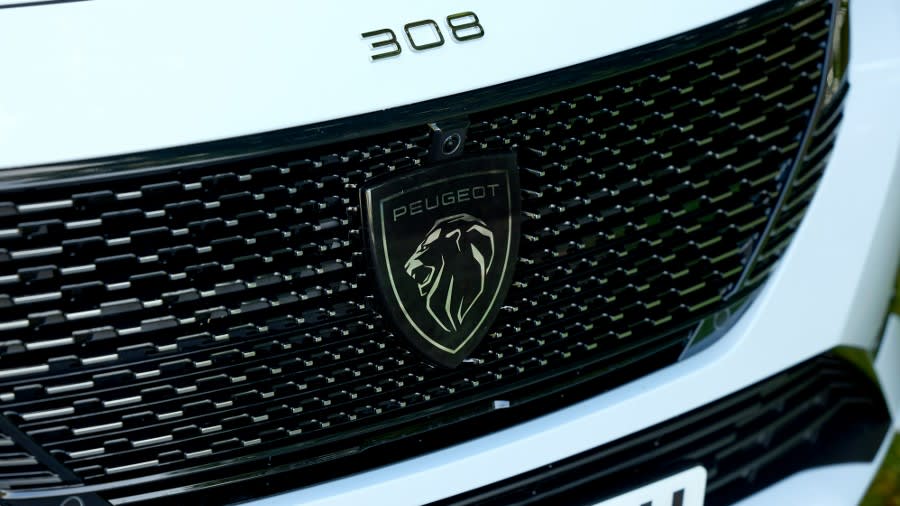
The sides have indentations and creases to accentuate its athletic capabilities, while the rear introduces a horizontal lightbar which spans the width of the tailgate.
Even on the electric version, there are two large tailpipes at the bottom, though, of course, they’re fake.
A roof spoiler and large alloys complete the look, along with Peugeot’s new shield badge.
Peugeots of old just looked strange, and this new one still looks odd, yet with a classy sophistication about it.
Anything else seems rather ordinary parked next to it.
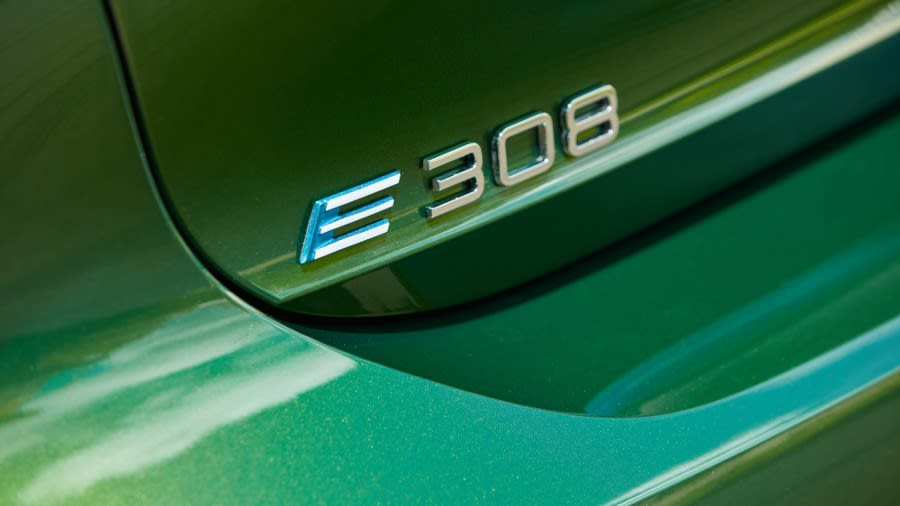
Key Features
There are four trim levels to choose from if you choose the traditional petrol or diesel 308: Active Premium, Allure, Allure Premium and GT.
However, if you select a hybrid model, entry-level Active Premium is removed from the selection and on the electric e-308, it's also unavailable, along with Allure Premium.
That means there’s only a choice of two.
Allure gets 17-inch alloy wheels, Peugeot i-Cockpit with a 10-inch infotainment touchscreen with SatNav, Apple CarPlay/Android Auto, LED headlights, a multi-function leather steering wheel, Peugeot i-Connect and a reversing camera.
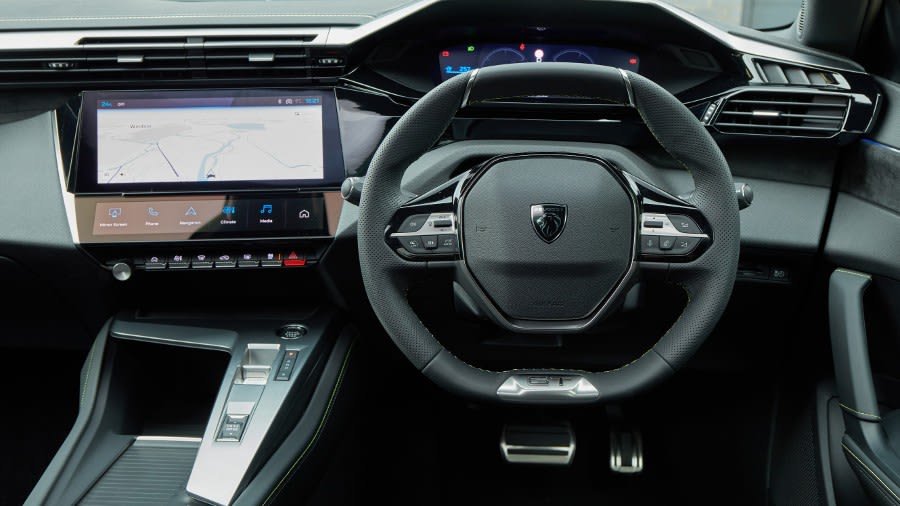
Top-of-the-range GT gets 18-inch alloys, keyless entry, GT branding, more aggressive side skirts and matrix LED headlights. It also boasts a digital instrument display, LED 3D rear lights, aluminium door sills and Alcantara upholstery, plus various additional safety features, which we'll cover later.
Currently, there is also a special limited-run trim called First Edition, which features distinctive e-308 badging, exclusive tri-material interior and heated front seats.
There is no choice regarding which electric motor you get, as there's only one to pick from, which puts out 156PS.
It is also worth pointing out that if you need some additional practicality, there's an estate version of the e-308 called the SW (short for Sport Wagon). However, we're only testing the hatchback version in this review.
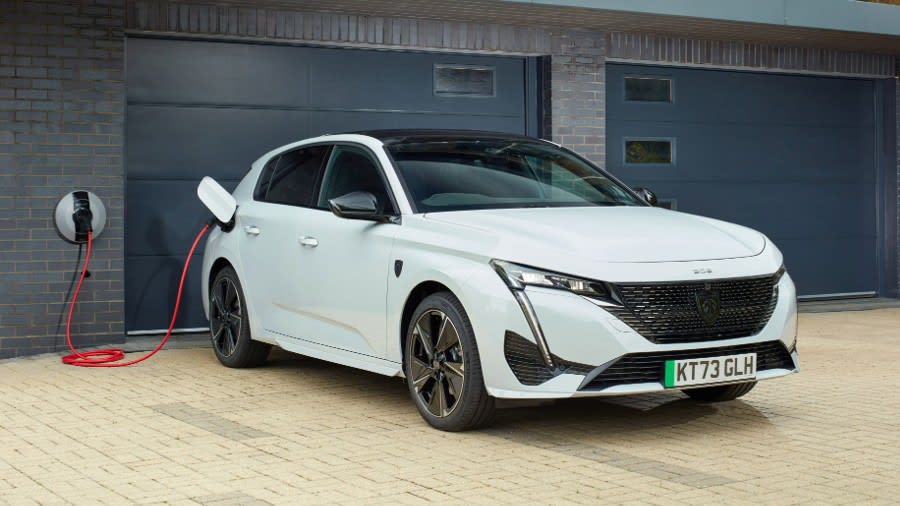
Range & Batteries
The Peugeot e-308 comes with a 54kWh battery, which is appearing in several of the manufacturer’s electric vehicles, as well as in other brands owned by Peugeot’s parent company Stellantis.
That is enough to deliver a claimed range of up to 267 miles, depending on trim.
In reality, you won’t achieve this figure, as these are lab tests.
In real life, factors such as the ambient temperature, road and weather conditions, not to mention driving style, will impact the actual range achieved.

Performance & Drive
We are testing the GT edition, but the performance should be identical regardless of which model you pick.
There are three driving settings: Eco, Normal and Sport. Only the latter engages the full power of the electric motor.
Zero to 62mph is dealt with in 9.8 seconds, which doesn't sound quick.
Nevertheless, as is standard on nearly all electric cars, there's an instantaneous dollop of torque delivery as soon as you press the accelerator. So, if you're used to driving a petrol or diesel automatic, the lack of delay might surprise you.
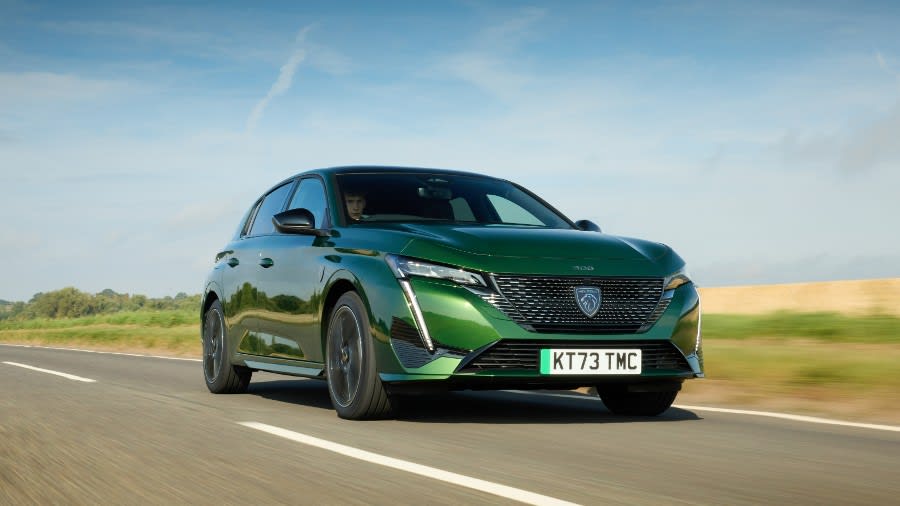
Once you’re moving, it doesn’t feel especially brisk. But once you’re up to 70mph on a motorway, it feels at home, comfortably cruising along and making light work of eating up the miles.
Even in the flagship GT version, the ride comfort is good, meaning you shouldn’t feel exhausted at the end of a longer journey.
But driving around town is where the e-308 excels.
The additional weight of the batteries means it's not quite as agile as its combustion-engined siblings. But the steering wheel is light and responsive, and its small size makes quick direction changes easy.
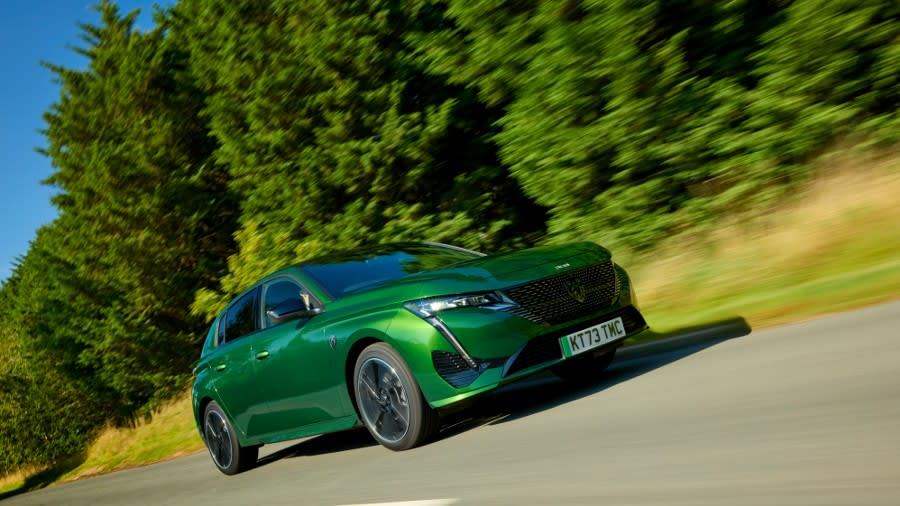
Thankfully, the wheel weights up nicely in the bends and the e-308 generates plenty of grip when taking a corner at speed.
It feels lively, albeit less fun to drive than some of its rivals, such as the Ford Focus, which is the go-to hatchback for engaging driving dynamics. Furthermore, the cornering ability is slightly inferior to the standard 308.
The extra weight in the e-308 means it feels more planted in a straight line. Still, the difference in the suspension's stiffness isn't pronounced compared with the fossil-fuelled versions, so it's still sufficiently comfortable.
However, the e-308 is less keen to change direction than the petrols and diesels, so you’ll encounter a little bit of understeer when going around bends.
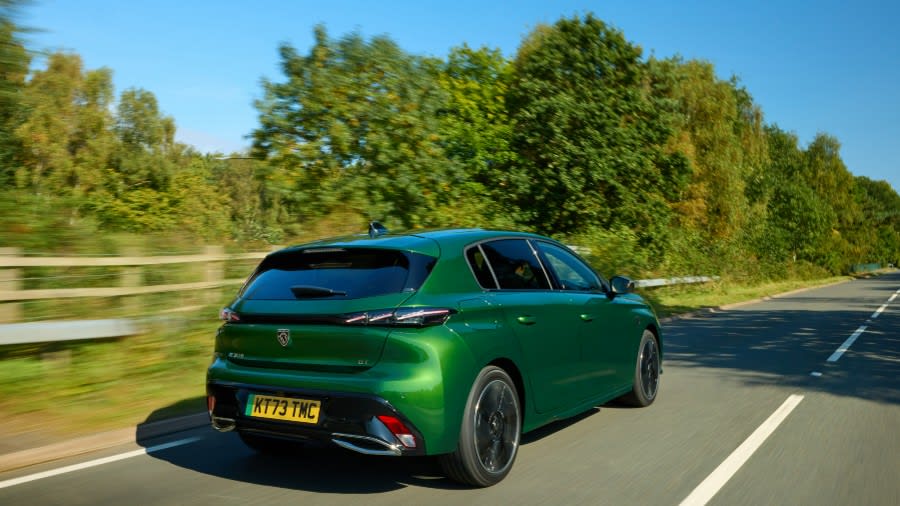
Nevertheless, for the needs of most drivers, any drawbacks won’t be all that noticeable.
The regenerative braking puts some charge back into the batteries when decelerating.
Unlike in most electric cars, which use flappy paddles behind the wheel to tweak the ferocity of the regen, there's merely a button.
Take your foot off the accelerator, and the regen braking kicks in, meaning you barely need to touch the brake.
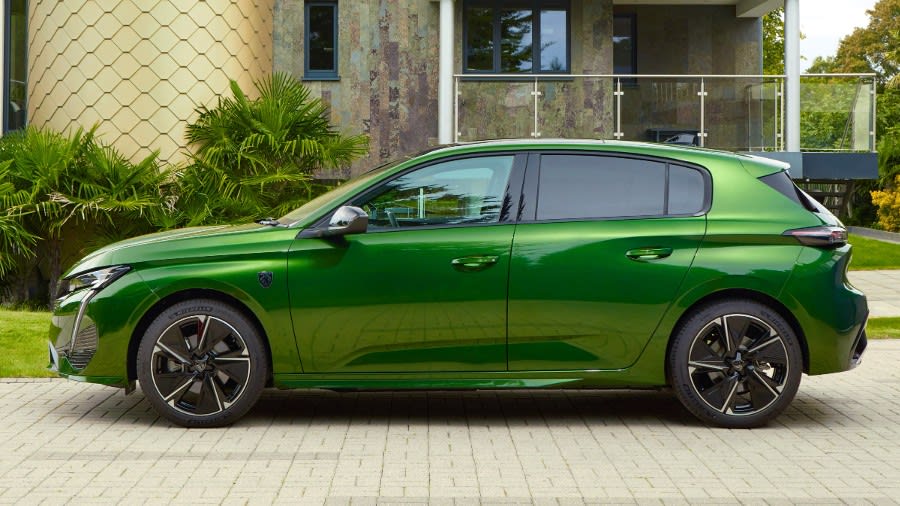
Charging
An 11kW onboard charger is included as standard – and that’s often an optional extra on many electric vehicles.
If you’ve got a 7.4kW home wallbox, you can charge it from empty to full in under seven-and-a-half hours.
Using a 100kW charger will take around half an hour to get from 20% to 80%.
Charging can be controlled from a smartphone app, meaning you can programme your scheduled departure time, and the car will ensure it's ready to go and in optimal condition.
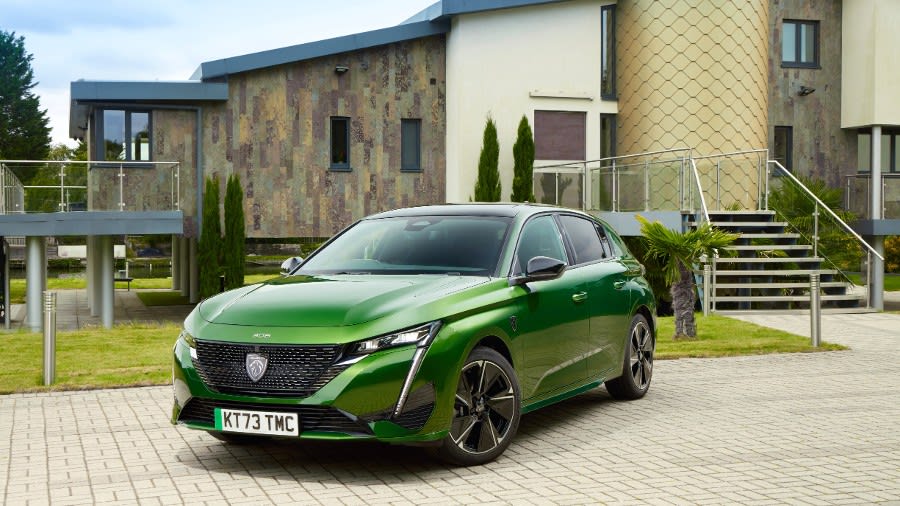
Running Costs & Emissions
Being an electric car, there are no emissions, so those wanting to make an environmentally friendly statement with their driving will be pleased.
It also means petrol stations are a thing of the past, too.
Despite the recent rise in the cost of electricity, charging an electric car at home will still be cheaper than filling up with petrol or diesel at the forecourts.
If you're leasing an e-308 as a company car, you'll be financially safe, with electric cars attracting the lowest Benefit In Kind tax rates.
Peugeot has a reasonably good reputation for reliability nowadays but still lags behind the brands from Japan and South Korea, such as Hyundai and Kia.
Nevertheless, with fewer moving parts in an electric motor, there's less to go wrong, so we hope that translates into even better reliability figures.
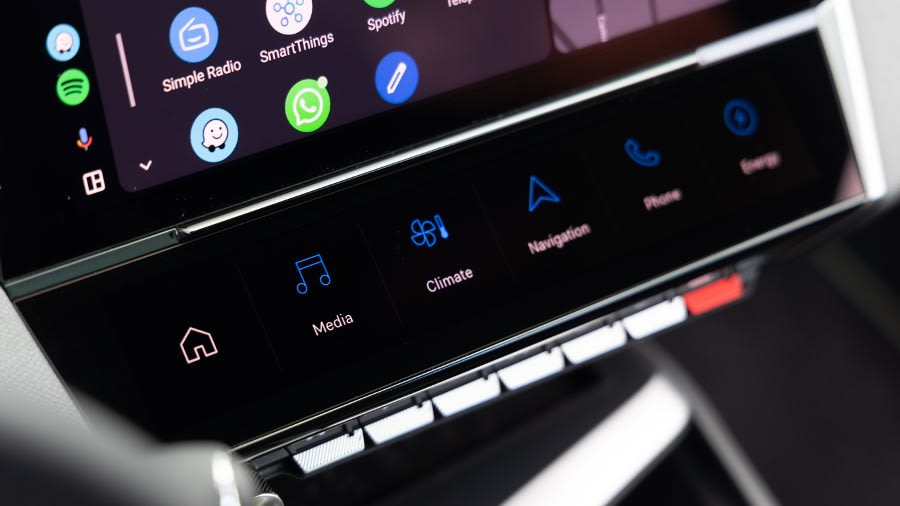
Interior & Technology
The Peugeot e-308’s cabin looks modern, stylish and classy.
In fact, it's about as far removed from old Peugeot interiors as you can get, featuring a steering wheel with a slightly flattened top and bottom, creating a hexagonal shape.
The dashboard hood has squarer edges than in most cars, while the gear selector area is brushed aluminium, sitting beneath a nice-looking touchscreen.
It has a quality feel, and if you hid the Peugeot badge, you'd easily be forgiven for thinking you were sitting in a more premium car.
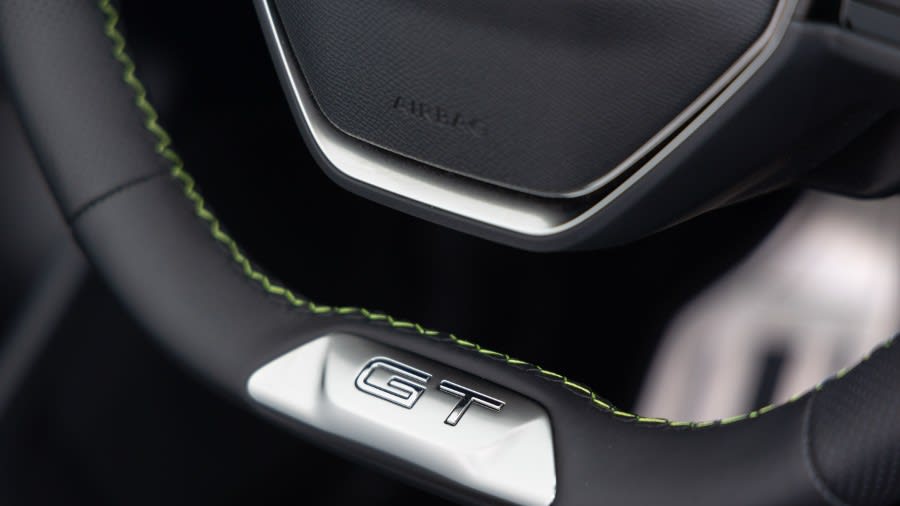
There are lots of plush, soft-to-the-touch surfaces, too, and the whole cabin screams ‘class’.
The infotainment screen looks inviting to use – and it’s a decent system, blending a good resolution with responsiveness and an intuitive menu layout.
There are shortcut buttons underneath which are touch sensitive and, although we find physical buttons more straightforward to operate on the move, they're big enough that you should get used to them.
Thankfully, physical controls are kept for the climate control, which is another plus.
Overall, this is one of the best-looking interiors on a hatchback outside the premium-badged brands.
Audi, for example, has long been regarded as the best all-rounder regarding cabin design – but the e-308 does give it a run for its money.
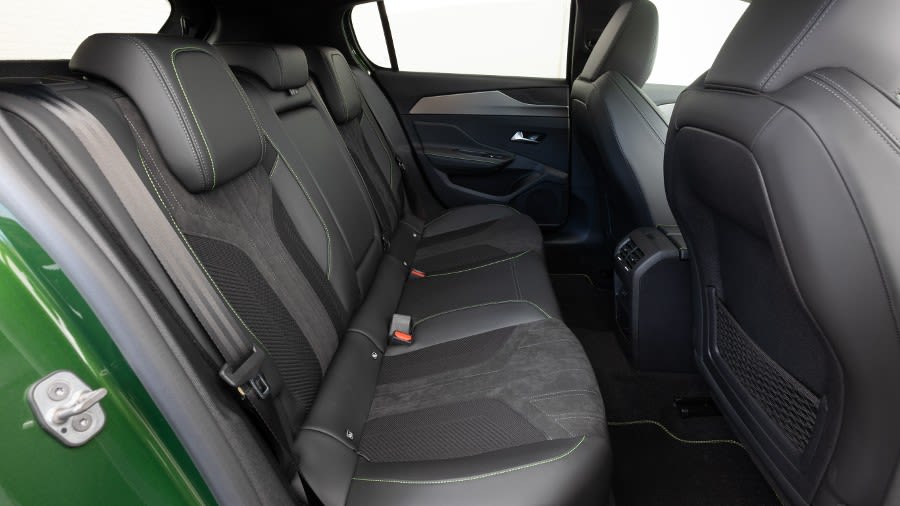
Space & Practicality
The Peugeot e-308 takes a bit of getting used to in terms of finding a comfortable driving position.
The steering wheel is designed to sit lower than in most cars, so you feel like it's almost between your legs rather than reaching out to it with your arms stretched out.
That takes some adapting, especially as it's difficult to avoid it because the flattened top of the wheel may prevent you from seeing the speedometer if you try to peer through it rather than over the top of it.
Once you're used to it, though, it isn't such an issue – and there's plenty of adjustment in the wheel to find a suitable position.
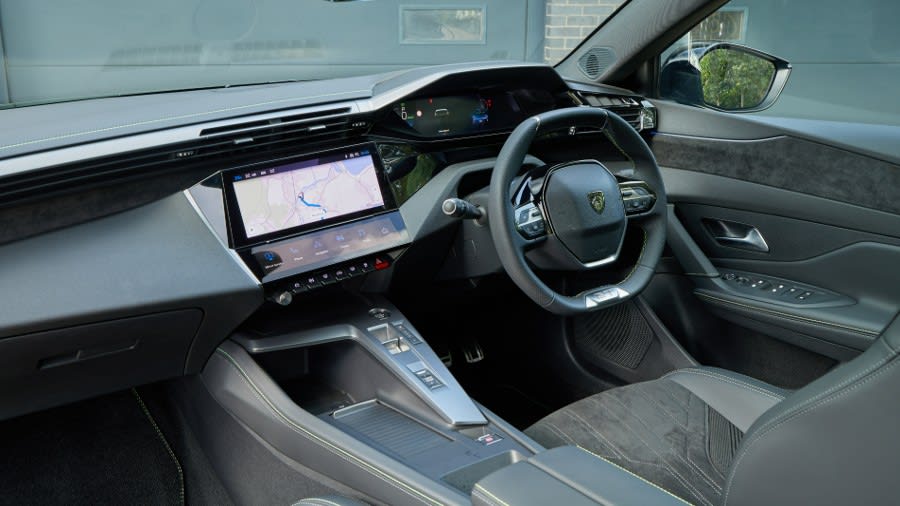
In terms of visibility, it’s pretty good out of the front, thanks to thin pillars on either side of the windscreen.
However, the rear pillars extend outwards in opposite directions, making them quite intrusive when trying to see over your shoulder. But at least the back window is on the large side.
Rear parking sensors are factory-fitted on all models, though, which helps. In fact, Allure, the lowest available trim level on the e-308, also gets a rear-view camera.
There is ample legroom and headroom in the front, though very tall rear-seat passengers might be brushing their heads against the roof.
A couple of adults in the back should be fine, but if you want all three rear seats filled, it's best to take the kids with you instead.
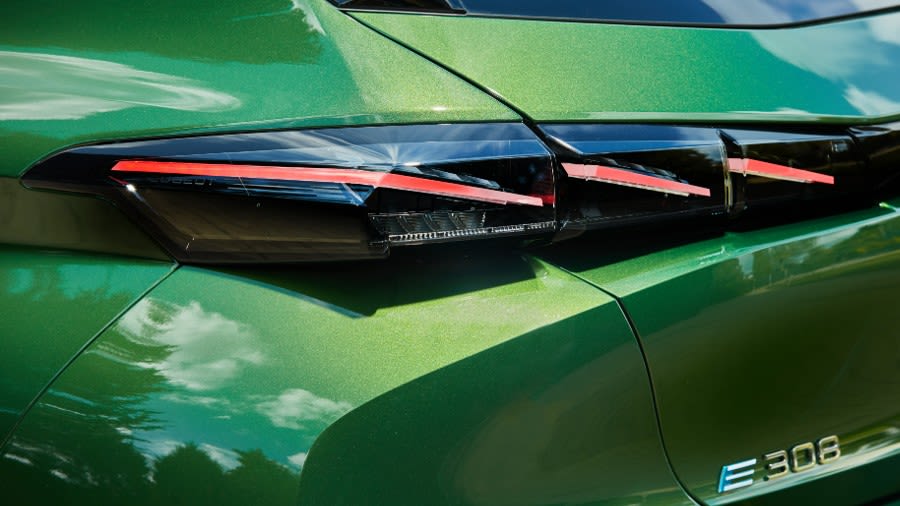
Interior storage is pretty good, with cubbies in the centre console, four cupholders (though the two in the back require the middle seat to be vacant), reasonably sized door bins and a generously sized glove compartment.
The boot measures 361 litres in the all-electric version, which is not far off the fossil-fuelled Ford Focus.
Peugeot doesn't supply a figure with the rear seats folded down, but it's 1,271 litres in the plug-in hybrid version, which shares the same 361-litre figure with the rear seats in place.
It is a reduction on the standard 308, though, which has 412 litres of space, expanding to 1,323 litres with the back seats folded.
When you do put the seats down, it leaves a little ridge where they don't entirely fold flat, but it shouldn't be too difficult to lift items over it.
The boot is shaped to take maximum advantage of all that room, and there’s some underfloor storage, where you could keep charging cables, for example.
The only thing that might get in the way is the boot lip, which is a little steep and makes lifting larger, heavier items trickier.
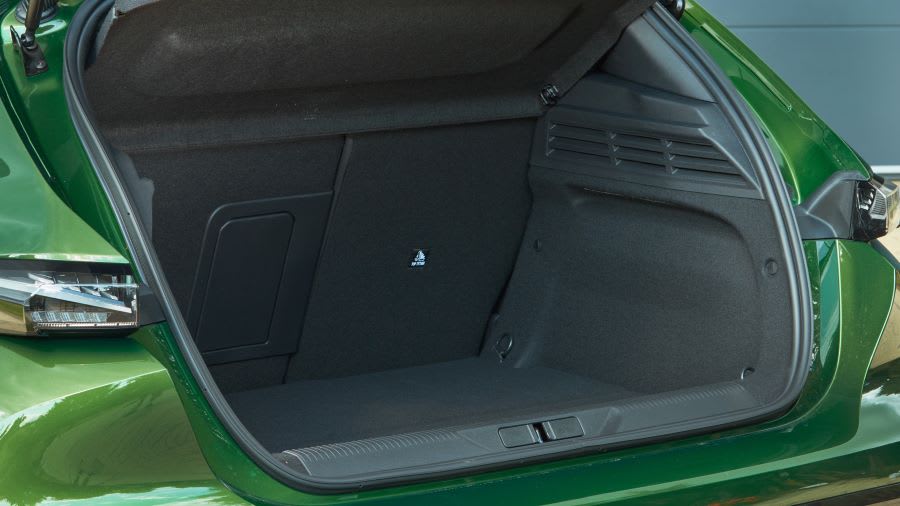
Safety
Euro NCAP hasn't tested the Peugeot e-308, but that's because the rating from the standard 308 is valid.
It was tested in 2022, earning a four-star rating and scoring 76% for adult occupants, 84% for children, and 65% for safety assists.
Those aren’t terrible figures, but they are inferior to its peers, most of which scored 80% or above for adults.
A four-star rating is hardly a disaster, but Peugeot would have hoped to score five stars.
Mind you, with safety improving constantly, the testing criteria are more stringent than ever.
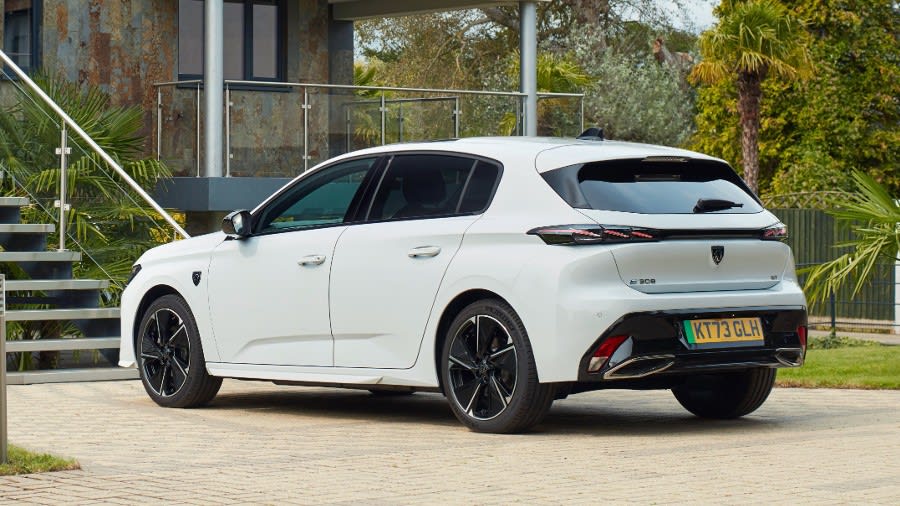
Safety equipment includes automatic emergency braking, lane keeping assist, speed limit and traffic sign recognition, intelligent speed adaption and tyre pressure sensors.
The Peuegot also has an acoustic alerting system, which plays a tone when travelling at low speeds to alert pedestrians, bearing in mind there’s no engine noise.
The GT model gets the Drive Assist Pack, with rear cross-traffic alert, adaptive cruise control with stop-and-go function and long-range blind spot detection.
It also includes Peugeot SOS and Assistance, which sends your location to the emergency services in case of an accident. At the same time, the Assistance feature puts you in contact with Peugeot if you have a problem with the car.
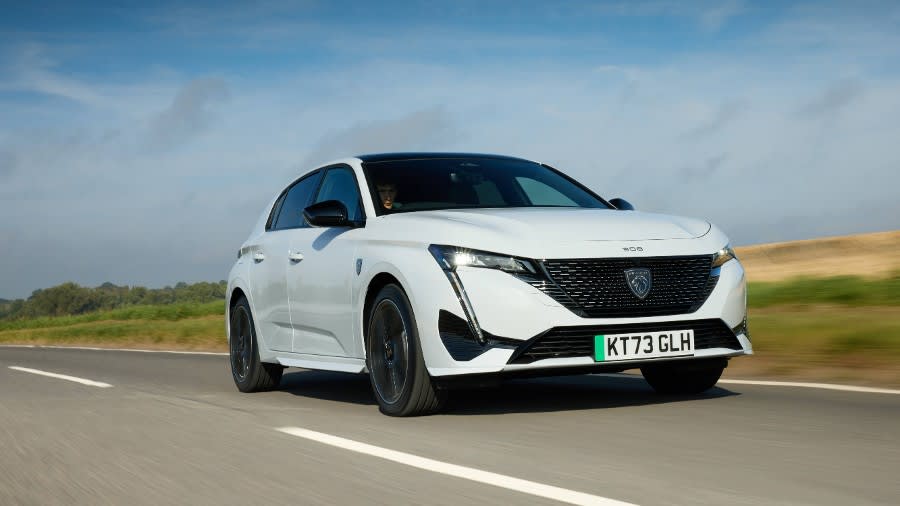
Options
Most of the added extras aren’t available on the electric version – and the ones that are can only be specified on the GT trim.
Olivine green is the default body colour, but black, light grey, dark grey, white, dark red and blue are also available for an extra charge.
There is a Driver & Passenger Seat Pack, which includes electric driver seat adjustment with memory function and a more adjustable passenger seat, with various options available, one of which is Nappa leather.
Different 18-inch alloy wheels are also offered, along with an openable glass roof and spare wheel.
A 360-degree camera can be added to the GT version, along with a Focal premium sound system.
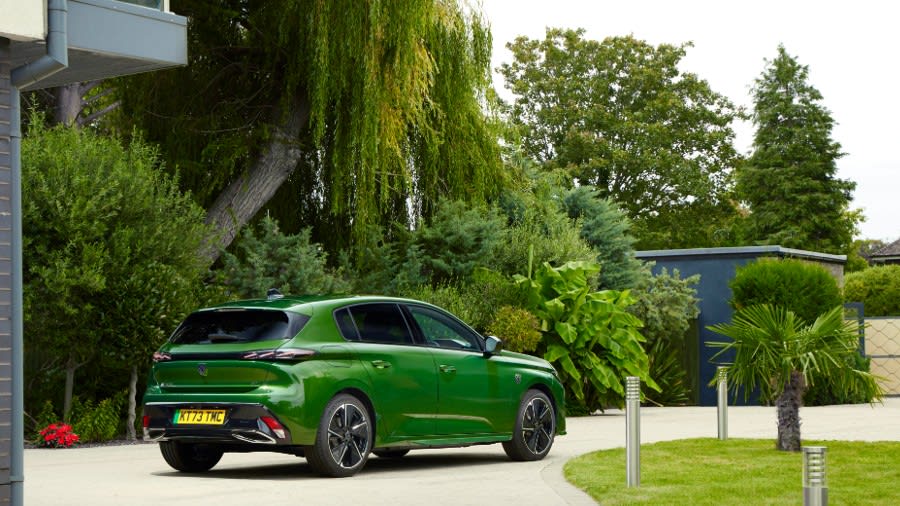
Rival Cars
We said earlier that all-electric family hatchbacks were a rare breed – and that’s true – but we've still got several suggestions.
The MG4 EV is more of an SUV crossover, so it’s not a direct competitor, but it’s an excellent car that’s superb value for money, so we have to recommend leasing it.
Regarding more traditional hatchbacks, the Renault Megane E-Tech (below) and the Vauxhall Astra Electric are worth looking at.
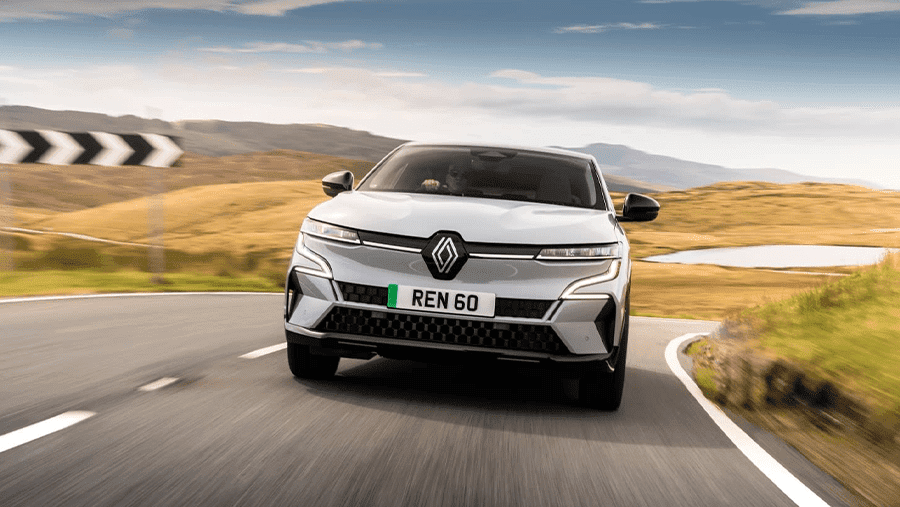
The Astra shares much of its underpinnings with the e-308, given both brands are owned by the Stellantis group nowadays.
There’s also the Mini Electric, the Volkswagen ID.3 and, from SEAT’s performance arm, the Cupra Born.
Two leftfield choices come in the form of the ORA Funky Cat and the BYD Dolphin (yes, those are both cars – they're from China and shouldn’t be dismissed).
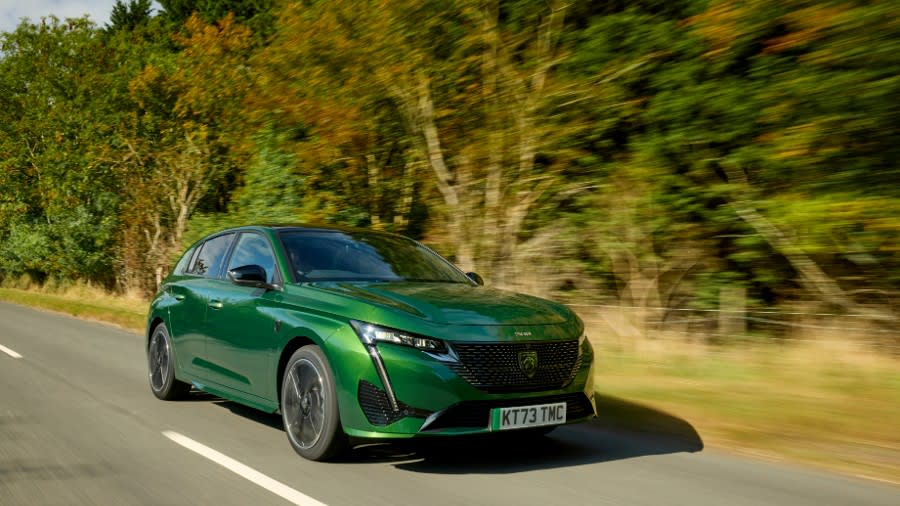
Verdict & Next Steps
Overall, the Peugeot e-308 is a very tempting car to lease.
While SUV crossovers are dominating the market, this is a traditional hatchback that’s got plenty of futureproofing in mind thanks to its all-electric motor.
The interior is superb, the economy is excellent and it's comfortable to ride in. What’s more, it's good to drive, and the looks are on point - plus it's somewhat practical for a small family car.
The E-308 is more costly than traditionally-fuelled hatchbacks, so lease customers will need to make the most of the savings by topping up batteries rather than fuel tanks. We'd also likely spend the extra money on the entry-level e-308 SW (estate) version, rather than choosing the GT hatchback, for added practicality.
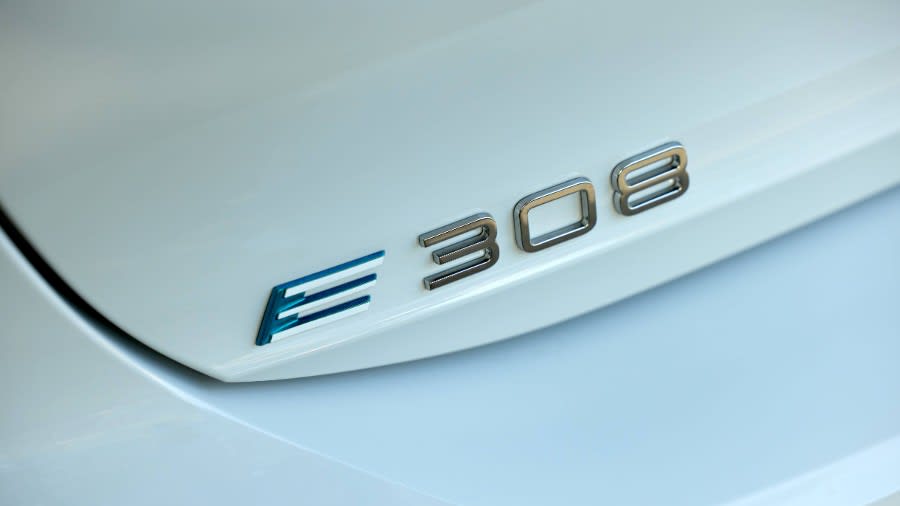
Where to next?
View latest Peugeot E-308 lease deals - from just £497 per month inc VAT**.
Call us on 0118 3048 688 or hit the green 'Enquire' button for more details.
Looking for a great leasing deal? Check out our incredible range of Special Offers and Lease Deals.
New hatchback? Read our latest Reviews and find the right model for you.
Want to know more about leasing? Take a look at our comprehensive Leasing Guides.
Interested in everything motoring? Why not catch up on all the latest Car Leasing News.
**Score based on Select’s unique meta score analysis, taking into account the UK’s top leading independent car website reviews of the Peugeot E-308 Hatchback.
**Correct as of 08/04/2024. Based on 9 months initial payment, 5,000 miles annually, over a 48 month lease. Initial payment equivalent to 9 monthly payments, or £4,475.70 (Plus admin fee) Ts and Cs apply. Credit is subject to status.






















